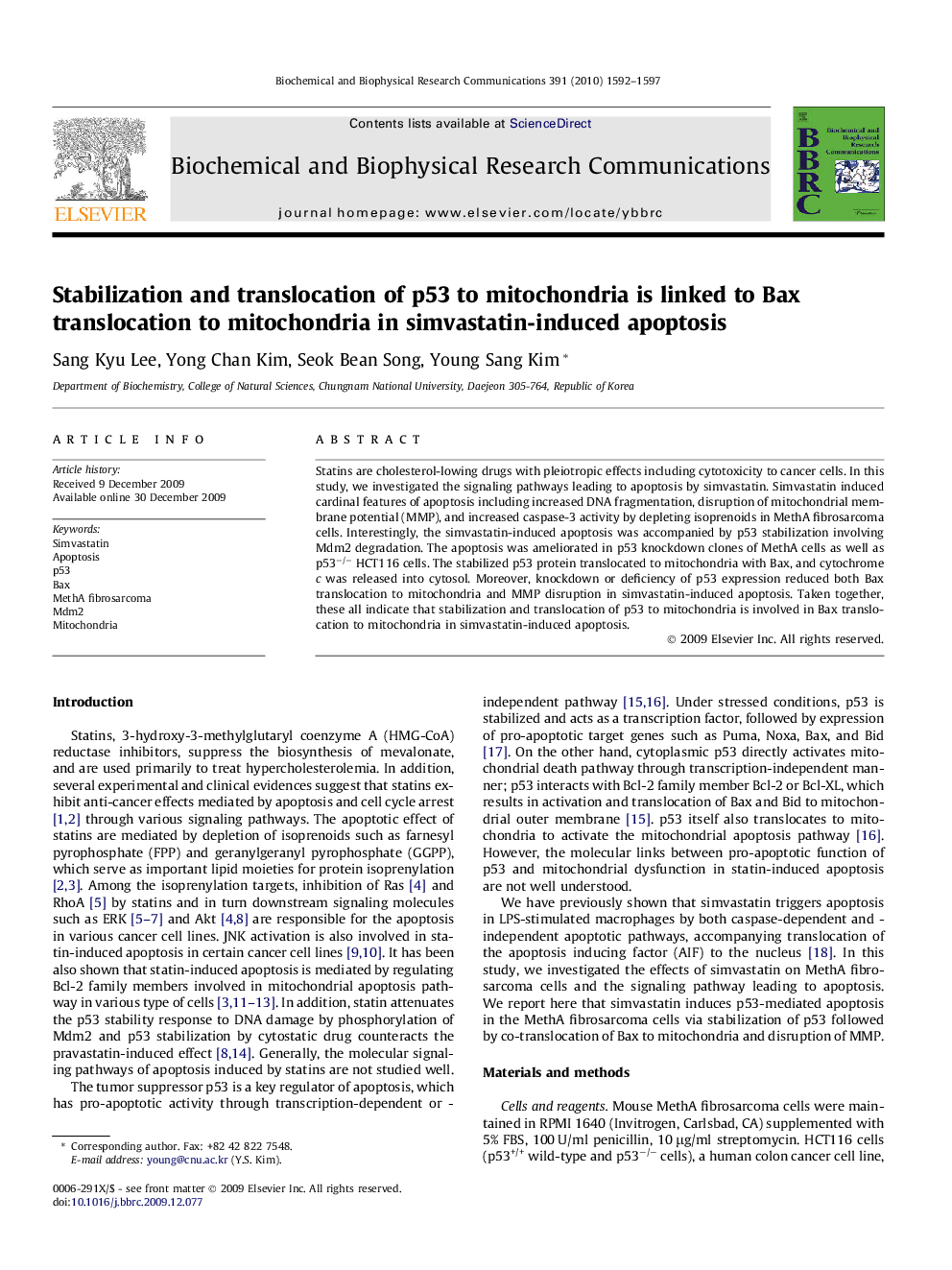| Article ID | Journal | Published Year | Pages | File Type |
|---|---|---|---|---|
| 1932266 | Biochemical and Biophysical Research Communications | 2010 | 6 Pages |
Statins are cholesterol-lowing drugs with pleiotropic effects including cytotoxicity to cancer cells. In this study, we investigated the signaling pathways leading to apoptosis by simvastatin. Simvastatin induced cardinal features of apoptosis including increased DNA fragmentation, disruption of mitochondrial membrane potential (MMP), and increased caspase-3 activity by depleting isoprenoids in MethA fibrosarcoma cells. Interestingly, the simvastatin-induced apoptosis was accompanied by p53 stabilization involving Mdm2 degradation. The apoptosis was ameliorated in p53 knockdown clones of MethA cells as well as p53−/− HCT116 cells. The stabilized p53 protein translocated to mitochondria with Bax, and cytochrome c was released into cytosol. Moreover, knockdown or deficiency of p53 expression reduced both Bax translocation to mitochondria and MMP disruption in simvastatin-induced apoptosis. Taken together, these all indicate that stabilization and translocation of p53 to mitochondria is involved in Bax translocation to mitochondria in simvastatin-induced apoptosis.
